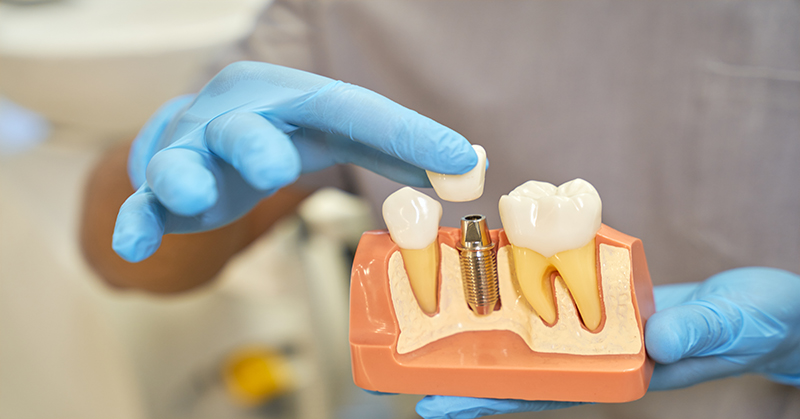Why Are Implants So Expensive?
According to recent statistics, tooth loss is a prevalent issue, especially among older individuals. Adults between the ages of 20 to 64 have an average of 25.5 remaining teeth. However, factors such as age, smoking, lower income, and education level can contribute to a higher likelihood of tooth loss. In this article, we will explore dental implants in detail through the following aspects:Will Your Insurance Cover Dental Implants?
updated on November 15, 2023
Dental implants are growing in popularity, with over 3 million Americans choosing them to replace missing teeth. While implants fuse securely into the jawbone providing natural-looking and long-lasting tooth replacements, the process does come with a hefty price tag. On average, a single implant can cost $1,600-$2,200 out of pocket. For patients needing multiple implants or other restorative work, these expenses quickly add up.
In this article, we will discuss what standard insurance plans typically cover for implants, additional financing you can utilize beyond insurance to make implants affordable, and tips for getting the maximum coverage. With the right information and planning, you can gain an understanding of the payment options at your disposal for replacing teeth with artificial roots for a revitalized smile.
How Dental Insurance May Cover Implants
Dental insurance policies have wide variability in their coverage of dental implants. While some plans do help pay a portion of implant costs, the specifics of each policy differ greatly. It's important to understand exactly what your particular dental insurance does and does not include for implants.
A top-tier example is the Anthem Essential Choice Platinum plan, regarded as one of the most generous for implant coverage. This plan provides an annual maximum benefit of $2,000 that can be used towards implants. Having such a high yearly maximum gives enrollees a good amount to put towards what can be a multi-step, expensive procedure. The Anthem Platinum plan also includes a rolled-over benefit, meaning any unused portion of the $2,000 annual maximum gets transferred over to increase the following year's available amount. This enables unused funds to accumulate, providing ample coverage.
However, many lower-tier dental insurance plans only provide partial financial assistance for implants. For instance, your insurance may only cover the initial surgical implant placement phase, but not any of the remaining steps like the abutment or crown. This leaves policyholders to pay the remainder of costs out-of-pocket, which may still be substantial. Always check your plan documents to find out the exact percentage covered for each phase of implant treatment.
No matter what level of implant coverage your particular insurance provides, being informed is key. Have an in-depth discussion with your dental insurance representative to understand copays, deductibles, annual maximums, and any limitations. Planning ahead for what is and isn't covered will help you financially prepare and budget appropriately for any uncovered implant expenses.
Other Ways to Save on Implant Costs
If your dental insurance leaves you with uncovered expenses for implants, there are additional options to help make this major dental work more affordable:
Flexible Spending Accounts (FSAs) and Health Savings Accounts (HSAs) can be utilized if you have access to either through your employer benefits. These accounts allow pre-tax dollars to be set aside and used for healthcare procedures like implants. However, rules differ on which exact implant-related expenses qualify, so check plans carefully. Any funds used from these accounts help reduce your overall costs.
Ask your dental office if they offer payment plans to break up the implant charges into more manageable increments. Since treatment occurs over multiple phases spanning weeks or months, you may be able to finance charges into smaller payments over time rather than paying everything at once. Payment plans makes the process less cost-prohibitive.
Compare pricing and discounts offered by different implant dentists or oral surgeons in your area. Some providers offer promotional discounts or bundle pricing on implants and restorations that provide cost savings compared to others. Shopping around is wise to find the best value.
Maximize your annual dental insurance benefits by timing treatment phases sequentially at the start of each policy year if possible. This allows maximum coverage for each phase. You can also lower costs by choosing implant hardware wisely - titanium is generally the most affordable metal.
Every dollar counts when financing major dental work. Seek out and utilize all potential avenues for cost savings, from insurance to payment plans to provider discounts. With diligent research, implants can be an achievable investment in your smile.
Conclusion
Understanding all your coverage options is key to making implants financially feasible. Always consult with both your insurance company and dentist's office to learn about available discounts, bundled pricing, max benefits, and other ways to reduce your out-of-pocket expenses. With the right planning and research, you can make this transformative dental work attainable.

free&low-cost dental clinics
View Now
dental health

Dental Implants

Dental Implants
How to Get Your All-On-4 Dental Implants Without Breaking the Bank
In the United States, the cost of All-On-4 dental implants can vary significantly depending on your location. For instance, the cost in different states ranges from around $12,000 to $39,200 per arch. When seeking affordable options domestically, it's important to explore various clinics and compare their pricing. Additionally, some dental practices might offer flexible payment plans or dental loans to help manage the costs.
Dental Implants
How Painful is Dental Implant Surgery?
If you are missing teeth due to decay, injury, or gum disease, dental implants offer an effective and natural-looking replacement option. Unlike removable dentures that can slip, implants fuse securely into your jawbone for permanent stability. They also help preserve bone and support surrounding teeth better than bridges or dentures. But most patients wonder - how painful are implants? The procedure does involve surgery and recovery time.
Dental Implants
Do You Know All These Different Types of Implants?
In the field of dentistry, dental implants have revolutionized the way we approach tooth replacement. With their durability, functionality, and aesthetic appeal, dental implants have become the go-to solution for individuals with missing teeth. However, not all dental implants are created equal. There are various types of dental implants, each with its own unique characteristics and applications. In this comprehensive guide, we will explore the different types of dental implants and the techniques used for their placement.
Dental Implants
How Can I Get Government Grants for Dental Implants?
Dental implants are a sought-after solution for missing teeth, offering a long-term fix that can significantly improve quality of life. However, the cost of dental implants can be prohibitive for many. Understanding government programs and other grants available for dental care, particularly dental implants, can help bridge this financial gap. In this guide, we will walk you through some government assistance and grant programs aimed at making dental implants more accessible.
Dental Implants
How to get free dental implants?
When it comes to dental implants, the cost can sometimes make you clench your teeth harder than the cold does. But fear not! There are a plethora of avenues to explore for low-cost or even free dental care. From state and local resources to dental schools and community health centers, let’s dive into where you can find that much-needed dental implants without breaking the bank.







